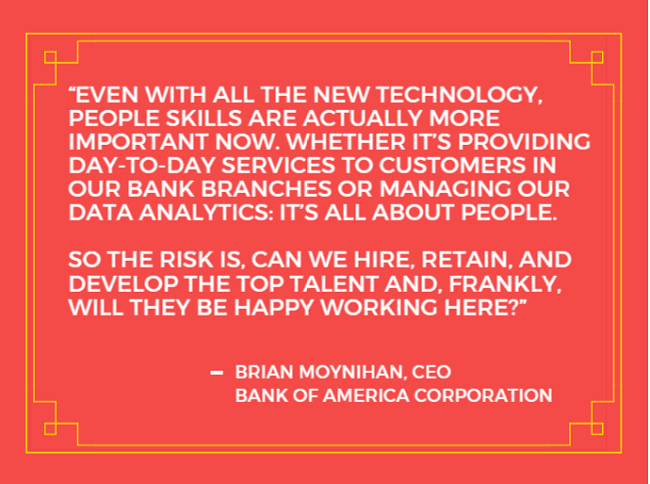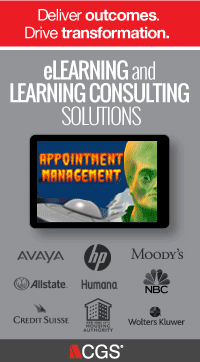Is Your Corporate Culture Failing? 6 Symptoms and How to Solve Them

As the job market gets more competitive and employees seek the best organization to invest their skills in, many factors come into play. Traditionally, factors such as salary, benefits, paid time off, commute and role or title have topped the charts as the top priorities for job selection. In recent years, there is one factor that has been driving job selection more than anything else: corporate culture.
Job seekers are getting more selective about the companies that they choose to join. They are asking questions related to opportunities for growth, transparency and communication between leadership and the workforce, involvement with the local community, organizational structure and programs to improve and cultivate overall employee satisfaction. The startup boom has been especially influential in the movement, contributing to the notion that a work environment should be open, inviting, creative and continuously driving toward innovation and collaboration. The conventional corporate office, with closed cubicles, lack of community spaces and an unapproachable executive team is quickly becoming a thing of the past.

As a result on the emphasis of positive, close-knit community, many organizations have taken steps towards building or improving upon their culture. In fact, a recent study conducted by CGS revealed that maintaining, bolstering, or transforming business culture ranked highest in spending priorities in 2016.
It’s one thing to be willing to invest in culture, but how can companies be sure that they are addressing their goals in the most effective way? The company culture bandwagon has resulted in organizations rushing to give an appearance of a collaborative and progressive culture, but ultimately, many executives are missing the mark.
How can you tell if your organization’s corporate culture is non-existent, or arguably worse, half-baked? Find out by reading the symptoms below.
1: Leadership Isn’t Accessible to All Employees
When one of your employees has an issue, an idea or a question, do they know how to reach the leadership team? More importantly, are they comfortable and welcome to do so? If the answer is no, this is a serious issue. Employees should feel confident that their leaders are not just open to hearing their feedback, but actually seeking it out. In a world that is increasingly digital and diverse, top executives recognize the need for a conscious strategy to shape their corporate culture, rather than having it defined for them through social media. An environment in which there is a sharp divide between executives and employees discourages creativity, potentially limiting the amount of effective and groundbreaking work that your organization is capable of.

Whether it’s the millennial proposing a social campaign to drive new revenue, or the IT programmer suggesting technology-based improvements to the onboarding process, you may be surprised at what your workforce can contribute.
2: Your Employees Aren’t Asking for Training
Scenario: An HR assistant has been thriving in his role, providing much needed support to the recruitment team and the organization as a whole. After losing valuable time trying to set meetings, prioritize deadlines and coordinate resources to achieve the company’s goal of assembling employee events, he realizes that he could be much more effective in his role if he could attend a beginner’s course in project management. Without a culture of learning and training in place, the HR assistant may just bite his tongue and continue struggling with this issue.
Your organization should encourage employees to reach out for extra help. There should be a budget in place for this type of request, and efforts should be made to make employees aware of the training program’s availability. A learning culture positions a business for success; several studies have indicated that getting your learning culture right can lead to a 4x revenue growth, and that a learning culture provides a staff with skills that are 58% more likely to meet future demands.[i]
Leading to our next sign…
3: You Have Trouble Hiring (or Keeping) Skilled Workers

The rise in job openings is running parallel next to a bad trend: the average number of days a job posting remains available is going up. When an individual leaves your organization, line of business managers and HR often scramble to fill the vacancy. But according to the Corporate Executive Board, for every job vacancy posted, less than 20% of applicants meet the qualifications for the job. Why does this happen? More often than not, it can be contributed to a lack of investment in developing skills. Experts say that job training programs in the U.S. remain lackluster compared to the country's global peers in Europe and Asia. If you’ve taken the time to properly onboard and train new employees, their skills should grow and develop to meet the demands of more senior roles down the line.
Hiring a skilled employee is one challenge, but keeping them on board is an even greater one. Did you know that 90% of employees decide whether they want to stay at a company within the first six months of employment, and as much as 20% of employee turnover happens within the first 45 days of employment?[ii]
According to Tali Rabin, SVP of Human Resources at CGS, executives should make sure that “new hires understand the culture of the organization and how s/he will fit into the new environment.” This will set the tone and a mutual understanding as to what both the new hire and the organization should expect from the relationship. Taking the time to ensure that the interviewee fully understands the role responsibilities will increase their satisfaction within the role.
Here’s a tip: Keep track of the onboarding methods that receive the most positive feedback and communicate across departments to make sure each team is benefiting to the fullest extent. Encourage recruiters, HR line of business managers and new employees to share their success stories.
4: Employees Aren’t Excited About Their Work
When your workforce is genuinely excited about the work they’re doing, it benefits everyone: the employees, the organization and your clients. The quality of work and treatment of customers will be a direct reflection of how invested employees are in their work. If it’s not engaging or challenging, you can be sure that the output won’t be either. The highest quality work is often the result of putting employees before your clients.[1] When an employee feels appreciated, there is a much higher chance that they will put in the extra effort to deliver the best work.

A quote from PwC’s 2016 Annual US CEO Survey illustrates the role that culture plays in retaining happy employees and therefore managing risk: “Even with all the new technology, people skills are actually more important now," says Brian Moynihan, CEO of Bank of America Corporation. "Whether it’s providing day-to-day services to customers in our bank branches or managing our data analytics: it’s all about people. So the risk is, can we hire, retain, and develop the top talent and, frankly, will they be happy working here?”
Another great way to get employees excited about their work is to add some fun and interactivity to your learning strategy. Gamification allows you to “disguise” traditional learning or what might normally be seen as a tedious task as entertainment. Use creative, design-rich visuals, build in achievable goals and make sure that there are rewards and positive feedback to encourage collaborative teamwork and friendly competition.
5: Failing to Collect Data and Make Changes Based on Results
One of the most strategic methods of improving employee satisfaction, and therefore building a positive company culture, is through collecting and analyzing data to make informed changes. 85% of corporations have at least some form of a learning & development program[iii], but these organizations must be sure to have well-defined KPIs to track how these programs are performing.

Continuously assess employee performance and feedback to see where your organization can improve.
Ask yourself these three questions:
- Do employees feel equipped with the necessary skills to complete their tasks?
- Are employees showing signs that they feel overwhelmed or overworked?
-
Are there ways in which time-consuming manual processes can be automated or simplified?
Keeping these questions in mind will allow the company to pinpoint problem areas and suggest solutions.
6: Company Always Opts for the Quick Fix (Thinking That Throwing Money Will Solve the Problem)
Scenario: One of your employees has expressed frustration over late-nights and impossible workloads, resulting in tension with the supervisor. This employee is dedicated and has not previously complained about his/her position. What is your company most likely to do?
If the employee is valuable, many executives might suggest increasing salary or promoting the employee to handle the situation. Though this might temporarily satisfy the employee, s/he is likely to experience similar frustration as time passes. A better approach might be to take the time to fully understand the situation impacting her role: Why has the workload increased so significantly? What issue or task does the employee spend the most time trying to resolve?
Whatever the issue, executives must do more than simply throw money to 'fix' the situation. Avoid quick fixes by taking the time to evaluate the larger recurring issue faced by employees. Have you ever wondered why certain companies hire great engineers, deliver seemingly endless innovations, and generate consistent growth, while others always seem to be reinventing themselves? A large part of the answer, in one word, is culture. A culture that understand how and when to conduct a self-diagnosis is likely to proactively identify problems and address them at the core.
Evaluating Your Organization’s Current Culture
How many of these signs could your organization relate to? If the answer is one or more, it may be time to address your current culture. Moreover, it’s imperative that you invest your efforts into creating a stable and well-planned strategy for culture development across employees and leadership, and extend your plan to create an employee brand that will reflect your culture to prospective recruits.
Start by asking these questions:
- Who are we as a company?
- What is our mission?
- What are our values?
- What traits are consistent across all of our employees?
- How good are we at injecting “fun” into employee engagement?
- Are we transparent?
- Do we treat culture as a brand or risk management strategy?
Answering these simple questions is a great first step in establishing how your culture should be constructed. Amy Swanson, Global Recruitment and Operations Consultant, stresses how a strong culture is a critical component to employee engagement, productivity and retention. "A lot of the culture statements, or the company's About Us, get skipped over when speaking with a new hire, with the conversation normally jumping to benefits and pay." says Swanson. "Make sure to address who you are as a company, as well as your mission, values and goals. This will ensure the new hire is educated on culture before joining the team."
If you haven’t already established the foundation for your company’s culture – do not fret. Admitting you have the symptoms is the first step, and now you can take action to fix it. If you have tried implementing steps to build a culture, and it hasn’t seen success, take the time to truly understand why this is so. If there are some problems you can easily fix, prioritize them. If the entire community is unhappy with the way the organization is being run, it might be more beneficial to abandon your current model and go with an entirely new approach.
Whatever you decide, keep in mind that organizations with strong leadership and a collaborative culture tend to outperform the competition in virtually every aspect. There has never been a better or more crucial time to invest in your employees and their satisfaction.
RESOURCES:
https://www.cgsinc.com/blog/tips-and-tricks-successful-employee-onboarding
https://www.cgsinc.com/blog/gamification-motivation-employee-training-parallels
https://www.cgsinc.com/blog/create-engaging-onboarding-program-improve-employee-retention
https://www.cgsinc.com/blog/business-leaders-change-management
https://www.cgsinc.com/blog/time-to-rethink-your-employee-training-program
https://www.cgsinc.com/blog/value-interaction-humanize-gamification-digital-learning-strategy
[1] https://www.cgsinc.com/blog/customer-service-strategy-brands-culture-fee...


